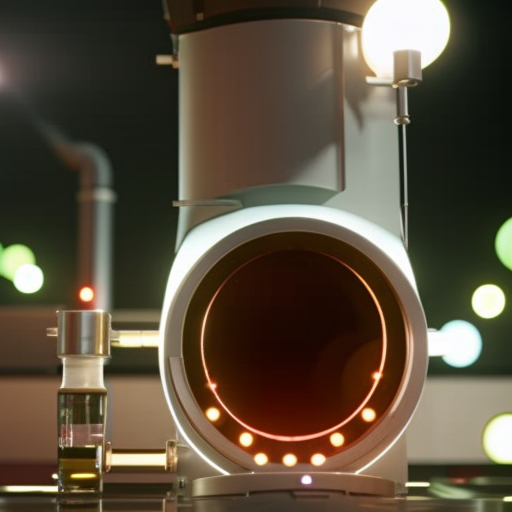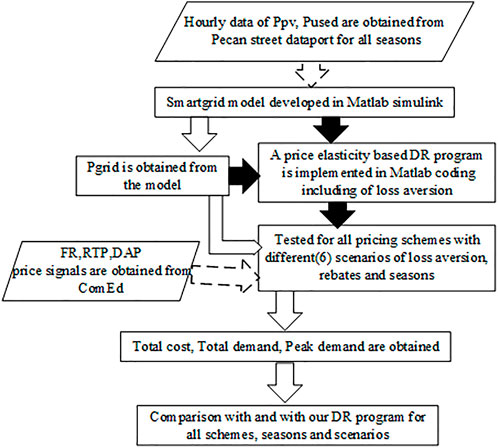 “`html
“`html
Abstract
Proper pretreatment of organic residues prior to anaerobic digestion (AD) can maximize global biogas production from varying sources without increasing the amount of digestate, contributing to global decarbonization goals. However, the efficiency of pretreatments applied on varying organic streams is poorly assessed. Thus, we performed a meta-analysis on AD studies to evaluate the efficiencies of pretreatments with respect to biogas production measured as methane yield. Based on 1374 observations, our analysis shows that pretreatment efficiency is dependent on substrate chemical dominance. Grouping substrates by chemical composition (e.g., lignocellulosic-, protein-, and lipid-rich dominance) helps to highlight the appropriate choice of pretreatment that supports maximum substrate degradation and more efficient conversion to biogas. Methane yield can undergo an impactful increase compared to untreated controls if proper pretreatment of substrates of a given chemical dominance is applied. Non-significant or even adverse effects on AD are, however, observed when the substrate chemical dominance is disregarded.
Introduction
Anaerobic digestion (AD) is a successful and robust waste treatment biotechnology converting organic waste into clean energy in the form of biogas and recovering nutrients as fertilizers and soil conditioners. AD plays a crucial role in achieving the ambitious goal of the European Climate Law, aiming for climate neutrality by 2050. An estimated increase from 0.3 EJ to 8.3 EJ by 2050 from biogas upgraded to biomethane (90% methane) makes it the non-fossil source with the greatest potential to be carbon neutral. AD systems mitigate the emission of greenhouse gases (GHG), by recovering methane (CH4) from organic wastes, and, when used as a combustion fuel, release carbon–neutral carbon dioxide (CO2). About 60 to 80% of GHG emissions from transportation can be reduced by replacing gasoline with biomethane produced from AD. Currently, the global potential for energy generation from biogas is estimated to be 10,000 to 14,000 TWh, with the potential to replace up to 10% of the world’s primary energy consumption of electric power, heat, and automotive fuel.
Sustainable Development Goals (SDGs)
- AD surpasses several other renewable energy sources representing the major technological pathway for the implementation of the United Nations Sustainable Development Goals (SDGs).
- Besides expanding local employment opportunities, AD promotes energy decentralization, with electricity supply to remote areas, e.g., rural communities by the implementation of small-scale biogas plants or by direct injection into the existing natural gas grid.
- The replacement of energy resources such as firewood by biogas can improve quality of life, promote gender equality, and higher educational levels.
Substrate Chemical Composition Affects Pretreatment Efficiency
The effect and magnitude of different pretreatments were assessed by calculating the standardized mean difference (SMD), which is the CH4 yield difference between the treated and untreated (control) substrate groups. Our findings indicate that to reach higher efficiencies for biogas production, classification based on chemical predominance rather than on the origin of the waste, prior to the choice of proper pretreatment is fundamental.
Protein-rich Substrates
About 1 million tons of protein-rich waste is produced globally every year. Although protein-rich substrates have high theoretical methane potential, AD can be severely affected by ammonia accumulation from protein breakdown. High concentrations of ammonia can particularly inhibit acetoclastic methanogenesis, leading to VFA accumulation, a lower biomethane yield, and process disturbances.
Lipid-rich Substrates
Milk and meat processing waste, oilseeds, and kitchen waste are examples of lipid-rich substrates. Lipid-rich substrates can exhibit greater biogas production than protein- and carbohydrate-rich substrates. However, high concentrations of LCFAs are harmful to AD and cause severe inhibition to microorganisms.
Lignocellulosic-rich Substrates
Lignocellulosic biomass is one of the most abundant sources globally for biofuel production. Approximately 181.5 billion tons of lignocellulosic biomass are generated worldwide every year. The broad chemical heterogeneity of this organic source prevents the application of a single operational condition that meets all requirements of this feedstock.
Conclusions
Lack of cost-effective pretreatment options or the application of suboptimum pretreatments to specific substrates are among the factors that currently limit the global potential for biogas production. Our meta-analysis showed that the choice of pretreatment should be defined by the predominant chemical composition of the targeted organic waste. For example, major global crop residues including corncob, rice husk, rice straw, sugarcane bagasse, and wheat straw with a combined annual generation of ca 1.3 billion tones by the key producing countries are all grouped as lignocellulosic substances with intermediate lignin content based on our categorization (< 25% lignin). The outcomes reported based on BMP quantifications can aid the selection of suitable pretreatments for laboratory- or pilot-scale simulations of AD processes for the industry. Our outcomes suggest that the current methane potential of these substrates could be enhanced by up to 170% if appropriate pretreatment methods are applied. This would add up to 1800 TWh of the global renewable energy potential assuming roughly 90% dry matter content and a conservative methane potential of 220 m3 CH4 per dry weight of the untreated feedstock. The guideline provided in this study assists selection of proper pretreatment methods based on the knowledge generated in past 45 years to boost economic gains and promote the contribution of AD to societal sustainability and decarbonization.
Methods
Search Strategy and Study Selection
We performed a systematic review and meta-analysis of studies published in the Web of Science database between 1975 and July 2020 based on the Preferred Reporting Items for Systematic Reviews and Meta-Analyses (PRISMA) checklist. The search was performed using keywords: “hydrolysis”, “anaerobic digestion”, “methane yield” and “pretreatment”. The search was restricted to only articles (document type) and only publications in English (language).
Data Collection
Articles eligible after screening by the inclusion criteria had their data collected in an Excel spreadsheet. The data extracted from each article includes general information (e.g., first author’s name, article title and year of publication), substrate type, substrate chemical composition, inoculum description, operational configuration (e.g., temperature condition, hydraulic retention time (HRT), stirring (i.e., RPM
Analysis of the Article
1. Which SDGs are addressed or connected to the issues highlighted in the article?
- SDG 7: Affordable and Clean Energy
- The article discusses maximizing biogas production, which is a form of clean energy.
- SDG 13: Climate Action
- The article mentions the role of anaerobic digestion (AD) in mitigating greenhouse gas emissions and contributing to climate neutrality goals.
- SDG 12: Responsible Consumption and Production
- The focus on efficient waste treatment and the valorization of organic residues aligns with sustainable production and consumption patterns.
- SDG 9: Industry, Innovation, and Infrastructure
- The article highlights the need for innovative pretreatment strategies to improve AD efficiency.
2. What specific targets under those SDGs can be identified based on the article’s content?
- SDG 7: Affordable and Clean Energy
- Target 7.2: Increase substantially the share of renewable energy in the global energy mix.
- Target 7.3: Double the global rate of improvement in energy efficiency.
- SDG 13: Climate Action
- Target 13.2: Integrate climate change measures into national policies, strategies, and planning.
- Target 13.3: Improve education, awareness-raising, and human and institutional capacity on climate change mitigation.
- SDG 12: Responsible Consumption and Production
- Target 12.5: Substantially reduce waste generation through prevention, reduction, recycling, and reuse.
- SDG 9: Industry, Innovation, and Infrastructure
- Target 9.4: Upgrade infrastructure and retrofit industries to make them sustainable, with increased resource-use efficiency and greater adoption of clean and environmentally sound technologies.
3. Are there any indicators mentioned or implied in the article that can be used to measure progress towards the identified targets?
- SDG 7: Affordable and Clean Energy
- Indicator 7.2.1: Renewable energy share in the total final energy consumption.
- Indicator 7.3.1: Energy intensity measured in terms of primary energy and GDP.
- SDG 13: Climate Action
- Indicator 13.2.1: Number of countries that have communicated the establishment or operationalization of an integrated policy/strategy/plan which increases their ability to adapt to the adverse impacts of climate change.
- Indicator 13.3.1: Number of countries that have integrated mitigation, adaptation, impact reduction, and early warning into primary, secondary, and tertiary curricula.
- SDG 12: Responsible Consumption and Production
- Indicator 12.5.1: National recycling rate, tons of material recycled.
- SDG 9: Industry, Innovation, and Infrastructure
- Indicator 9.4.1: CO2 emission per unit of value added.
4. Findings from Analyzing the Article
| SDGs | Targets | Indicators |
|---|---|---|
| SDG 7: Affordable and Clean Energy | Target 7.2: Increase substantially the share of renewable energy in the global energy mix. | Indicator 7.2.1: Renewable energy share in the total final energy consumption. |
| Target 7.3: Double the global rate of improvement in energy efficiency. | Indicator 7.3.1: Energy intensity measured in terms of primary energy and GDP. | |
| SDG 13: Climate Action | Target 13.2: Integrate climate change measures into national policies, strategies, and planning. | Indicator 13.2.1: Number of countries that have communicated the establishment or operationalization of an integrated policy/strategy/plan which increases their ability to adapt to the adverse impacts of climate change. |
| Target 13.3: Improve education, awareness-raising, and human and institutional capacity on climate change mitigation. | Indicator 13.3.1: Number of countries that have integrated mitigation, adaptation, impact reduction, and early warning into primary, secondary, and tertiary curricula. | |
| SDG 12: Responsible Consumption and Production | Target 12.5: Substantially reduce waste generation through prevention, reduction, recycling, and reuse. | Indicator 12.5.1: National recycling rate, tons of material recycled. |
| SDG 9: Industry, Innovation, and Infrastructure | Target 9.4: Upgrade infrastructure and retrofit industries to make them sustainable, with increased resource-use efficiency and greater adoption of clean and environmentally sound technologies. | Indicator 9.4.1: CO2 emission per unit of value added. |
Copyright: Dive into this article, curated with care by SDG Investors Inc. Our advanced AI technology searches through vast amounts of data to spotlight how we are all moving forward with the Sustainable Development Goals. While we own the rights to this content, we invite you to share it to help spread knowledge and spark action on the SDGs.
Fuente: nature.com

Join us, as fellow seekers of change, on a transformative journey at https://sdgtalks.ai/welcome, where you can become a member and actively contribute to shaping a brighter future.






